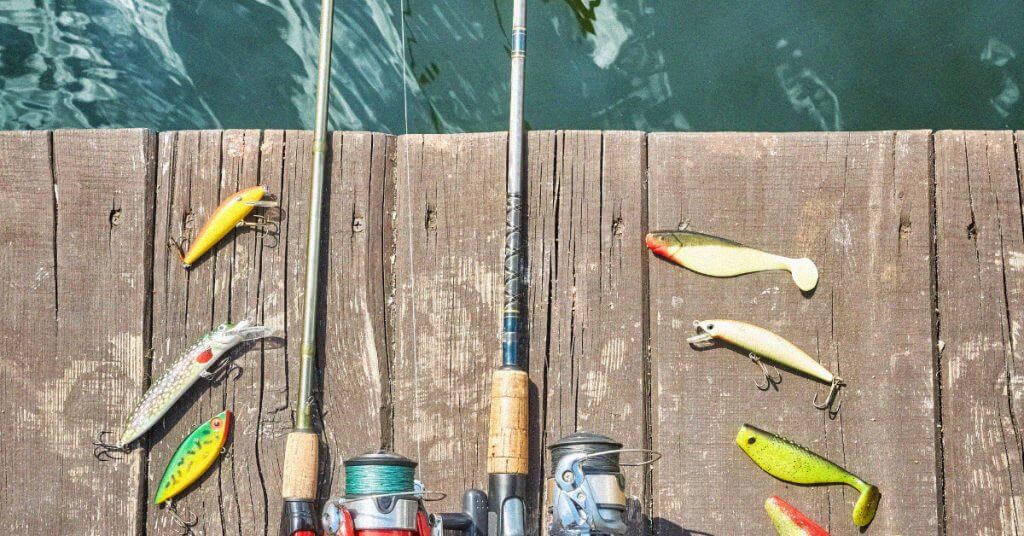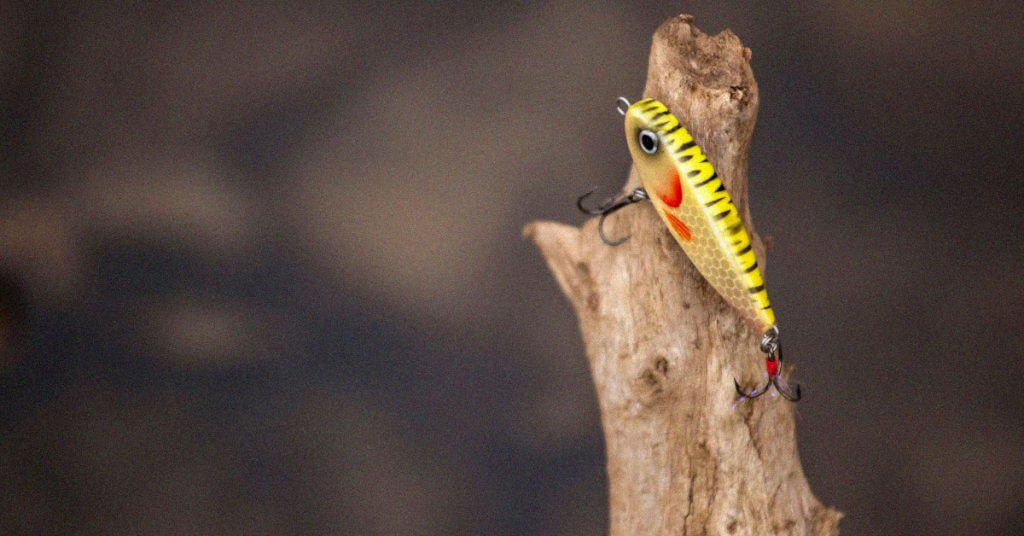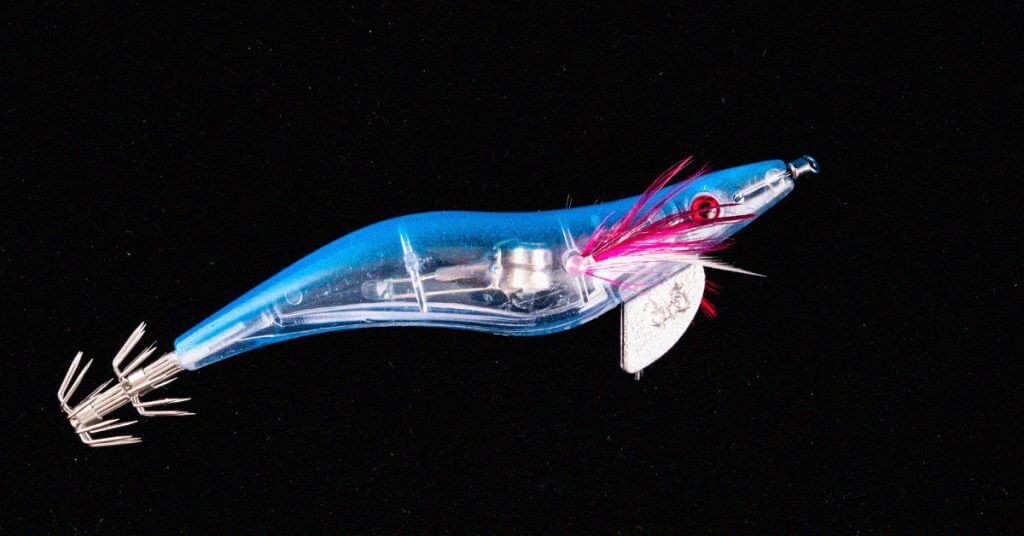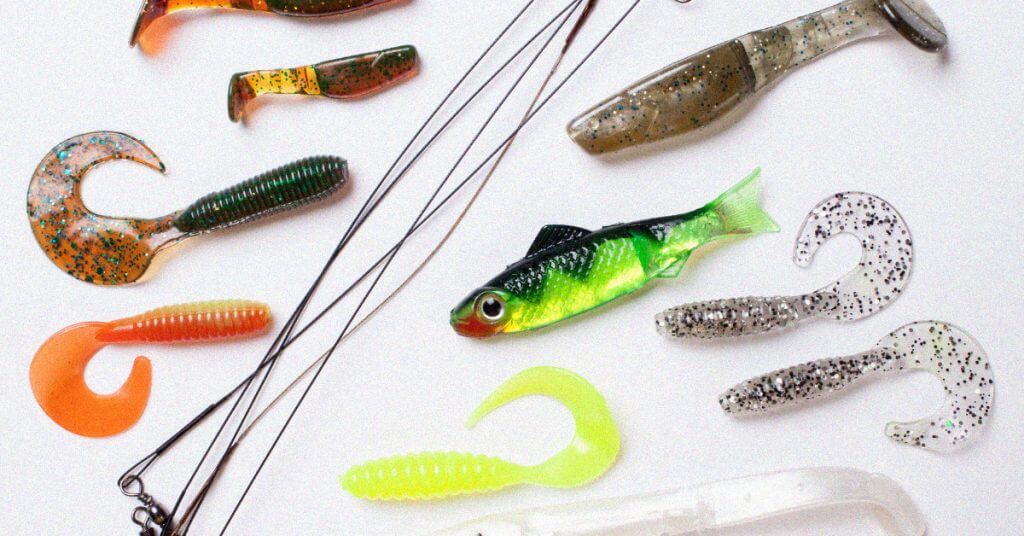Knowing how to make fishing lures is a skill that many anglers never even consider. Why would you even want to go through the trouble of making DIY fishing lures when you can head to the local pro shop and grab everything you want?
There are a few reasons why making fishing lures has become more popular. First, it can be more affordable to buy all the essential components of a lure. Second, it’s fun to play around with everything and see if you can throw something together that the bass will want to nibble on.
If you’re trying to cut down your fishing expenses this year and have a little fun along the way, you might want to look into some of these great homemade fishing lure ideas.
How to Make Your Own Fishing Lures
The first step in making fishing lures at home is deciding what type of bait you want to make. When you go to the store to purchase a lure, you always have a specific type in mind. You also need to think about the presentation and action.
Are you planning on making a topwater, a mid-water lure, or a bottom feeder? In this section, I’m going to break down the different types of DIY fishing lures and some ways you can turn your ideas into a reality.
Here are a few DIY fishing lure ideas from YourBassGuy.com community coordinator Wesley Littlefield’s YouTube video.
DIY Plastic Fishing Lures
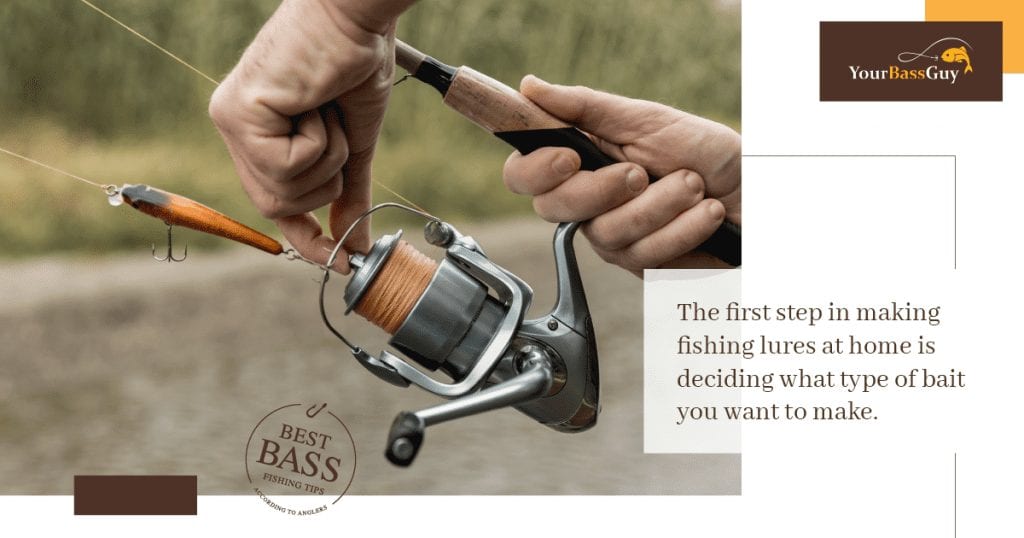
My favorite types of lures are plain and simple plastic or rubber worms, so let’s start there. These lures mimic the movement of a baitfish or worm in the water. You’ll recognize names like Berkley Gulp or Zoom baits.
To make a plastic lure, you’ll need to either purchase a kit or put together a kit of your own. Essentially, all you need is to make a mold in the shape of the lure you want and purchase the ingredients you’ll use to fill it.
I suggest going and buying a mold for soft plastics. You can buy molds in the shape of worms, craws, and pretty much anything you can think of. If you opt to buy a kit, they will usually come with injectors, color, glitter, and plenty of instructions to break down how to do it.
If you’re not the most “artsy” person in the world, I would go with this path. Keep in mind that the chemicals used to create the plastic lure will create fumes, so you’ll need a safe place to do this with plenty of ventilation.
Most kits you buy will come with a soft plastic liquid and coloring. You’ll combine the two components in a separate bowl and then either inject or pour it into the mold and heat it. The plastic molds can withstand a higher temperature than the interior fluid, so it will become hardened without damaging the mold.
Once you’ve done that, you’ll take the mold apart, and inside, you should find the soft plastic lure you wanted in the color you’ve chosen.
This method might require a bit of work, but you can put together quite a few lures for the price of one at your local bait shop.
DIY Wood Fishing Lures
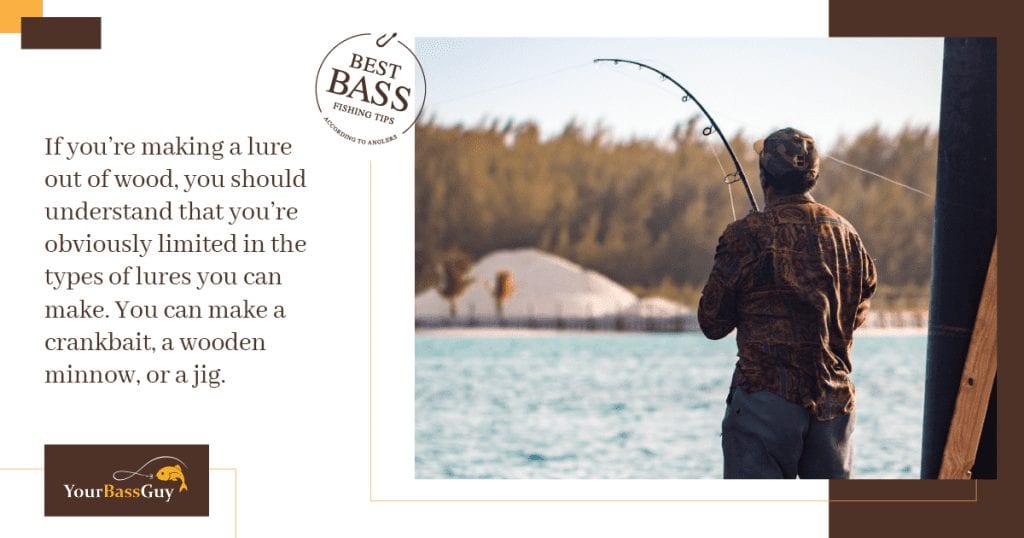
Now let’s talk about something really fun, making a custom fishing lure out of wood. For this project, you’ll want to pick up some safety gear because the job can get messy. You’ll want:
- Safety glasses
- Dust masks
- Work gloves
Also, you’ll need some ingredients to use in the making of the lure. Many people recommend using a hardwood such as poplar or balsa because it’s a nice balance between being too hard and too soft.
You’ll also need a quick-drying epoxy to secure components like the eyes onto the body. The sealer will coat the wood to prevent it from breaking down and absorbing water when you start using it.
Finally, you’ll need a few different colors of paint. I would go with spray paint if you’re trying to stay on budget, but you can use an airbrush if you already have that equipment.
If you’re making a lure out of wood, you should understand that you’re obviously limited in the types of lures you can make. You can make a crankbait, a wooden minnow, or a jig. For this example, we’re going to DIY a topwater popper.
Here are some of the steps you’ll take:
- Cut the wood down to size removing excess sections that you don’t need.
- Cut the wood into the shape of a wooden dowel of approximately six inches long.
- Use a belt sander until you have a diameter of around one inch. The dowel should be tapered on both ends.
- Take the dowel and cut it in half, so you have two even three-inch pieces.
- Use the belt sander to create the concave “popper” mouth on both pieces.
- Drill using a 1/32 bit in three places for the screw eyes and fishing hooks. You’ll want one about ⅔ down from the top of the lure in the front. One about ⅓ back from the front on the bottom and one on the back.
- Apply the sealer of your choice onto the lures and hang them to dry for at least 20 minutes. Once the time has passed, wipe off any excess sealer and let it rest for a full 24 hours.
- If you want to make a scale pattern on your lure, you’ll have to create a layered pattern that starts from the bottom and works its way up. This creates the belly of the baitfish. Many people do this using a bathroom scrubber to act as a mesh. You’ll place the mesh tightly over the lure and spray it. Let the paint dry overnight and then apply the eyes in the morning.
- Once you’ve completed the lure painting, you’ll want to apply another coating of sealer, and if you take a flame to the lure, it will pop any bubbles that you created.
- When everything looks good, you can attach your treble hooks and see if the lures float.
DIY Fishing Lures for Bass
When making the best lures for bass, you want to keep in mind everything you know and use it to design and craft your lures. You don’t have to go too far out of the way to try and create a design that has never worked before because you might end up wasting your time and ending up with a lure that doesn’t work.
I would suggest taking designs that are already out there and trying your best to create something similar. The cheapest and easiest way to go is to buy a mold that you can use to make soft plastic lures. This method is simple, a lot of people do it, and the design process doesn’t require that much knowledge.
If you’re really interested in doing something out of the ordinary, then follow along with the wooden lure guide above and see if you can customize it a little. Just remember that most of the wooden lures you make will float, so shop around and find the right kind of wood if you’re looking to do something different.
How to Make a Spoon Fishing Lure
The easiest and best DIY fishing lures to make at home are spoons. Learning how to make fishing lures out of household items is fun, and it gives new meaning to the sport. There are a few things you’ll need to get started.
- Cheap teaspoon or tablespoon
- Vise
- Saw
- Hammer
- Center punch
- Drill
- Bits
- Metal file
- Medium-grit emery cloth
- Needle nose pliers
- Toothpaste
- Split rings
- Swivel
- Treble hook
- Two small pieces of wood
Follow along with these steps, and in no time, you’ll have a great spoon for bass fishing:
- Put the two small pieces of wood in the vise with the spoon in between it. Make sure the “spoon” part of the utensil is sticking out, and the handle is in the vise.
- Cut a notch in the spoon using your saw.
- Move the spoon vertical, so the spoon part is in the vice, and the handle is sticking up. For this to work, the notch you cut needs to be visible.
- Hammer dents in the spoon using a center punch. These dents are where you’ll put the holes.
- Drill the holes. You can put the spoon in the vise to help keep it steady while you drill the holes.
- Reposition the spoon so you can access it and use the emery cloth and file to shape and remove any rough edges.
- Polish the spoon using a standard household cleaner and toothpaste.
- Attach a split ring, swivel, and hook using the pliers, and you’re good to go!
Pros of Making a Fishing Lure
As you can see from this guide so far, making your own fishing lures is a great alternative to spending a lot of money and risking losing them each time you go out. Everything continues to get more expensive, and honestly, if you know how to fish, you don’t need to be out there with the best of the best lures.
Sometimes a simple rubber worm that you made in two minutes in your basement will keep you going for weeks, and it might have cost you 10 cents or less to make. Here are some of the pros associated with making your own lures at home.
Cost-Effective
As I’ve said, it’s highly budget-friendly to make your own lures. If you’re anything like me, you have a serious issue with getting hung up and having to cut your line because you can’t get it back. This is a frustrating experience, but something that every angler deals with. Save yourself some money practice lure making at home.
Enjoyable
Lure building is fun because you have the flexibility and freedom to design them how you like. If there’s a specific color that you can’t find at the bait shop, you might be able to find it in a dye, and you can customize it using different glitter as well.
If you decide to make a wooden lure, you have complete control over the design aspects, and you can even play around and try to come up with something that has never been done before.
Cons of Making a Fishing Lure
While it might seem like a great idea, there are some obvious reasons why a lot of people never bother with DIY fishing lures.
Time Consuming
The most evident reason most people don’t do it is that they don’t have the time. Some of us have a hard time even getting on the water as much as we’d like, We never mind crafting a lure concoction in our garage before heading out.
Room for Error
The biggest reason I see is the margin for error in making your own lures. Many of the lures you buy from the big brands have been tried and tested for years, and it sometimes seems silly to veer off the track and think we can do it as good as they can. (not saying you can’t, though!)
Limitations
You’re also limited in the types of lures you can design. I can’t find any ways you would be able to create a spinnerbait or many other topwater lures for bass fishing. You also can’t make jerkbaits or a whole lot of lures for fly fishing either. The amount of fishing tackle you can design is limited when you’re doing handmade baits.
Final Thoughts
The idea of do it yourself fishing lures is an interesting one and not something I’ve experimented with too much myself, but I just might have to do it a little more. Whether you decide to purchase a DIY fishing lure kit or a little lumber for a wooden bait, make sure you pay attention to some of the instructions above so your lure doesn’t become a flop.
If you’re looking for a fun project to do with your kids, go with the spoon idea. That’s something that anyone can do, and I see no reason why the lure wouldn’t work being that it’s as simple as it gets!
Grab your fishing rod and get out there and catch fish!

